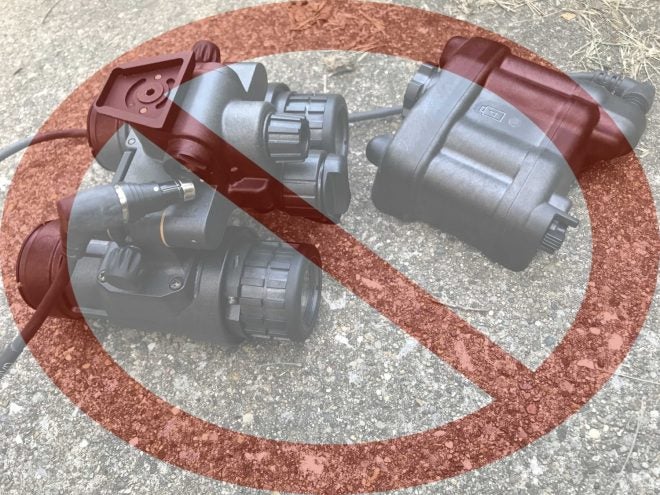
Out with the old and in with the new!
Advancements in Night Vision
Night vision is a high-tech industry that is ever-changing. However, for quite a while we have been stuck with analog technology. While it performs well and advancements are pushing the envelope, you would think by 2019 we would not have large tubes in front of our eyes. Like other electronics, night vision pushes towards smaller and lighter platforms. Even with the move to digital night vision, a large electronic device is still placed in front of the user’s eyes. A new option may provide us with a much more compact method of seeing in the dark.
Night Vision Contacts
Electrical engineer Zhaohui Zhong and his team conducted studies and developed Graphene-coated contact lenses. The lenses aim to provide a much more compact means of improving our ability to see in the dark. Graphene is capable of absorbing light across all light spectrums. While great for cool Instagram photos, current night vision technology is bulky and obtrusive.

GPNVG-18s are an amazing advancement in night vision technology providing 97 degrees of panoramic image intensification. Source: https://www.l3t.com/integratedlandsystems/product/ground-panoramic-night-vision-goggle/
Imagine the ability to have contacts that would give you the same capabilities as GPNVG-18s. The 97-degree field of view of panoramic night vision is better than 40 degrees offered by a monocular. Then imagine the ability of contact lenses to allow for full use of the 120-degree natural field of view. Low visibility use of night vision would also be much easier. For
concealment, contacts would simplify concealing the user’s capabilities, tools and intentions.
Impact on Night Vision Application
A large amount of night vision training is based around overcoming the bulk. Lasers are used to be able to look over the top the rifle and simply look where the laser is pointed. This is fine and effective but does not provide for a good cheek-weld, thus reducing a point of contact.

Notice that especially in prone, losing a good cheek-weld can be detrimental to recoil control and stability.
New taller mounts have also been used to allow for the nods to be used behind the optic. Some mount night vision on their rifle but there are many things you will want to be able to see in the dark without orienting your rifle in that direction.
As you can see in the picture, it is possible to align night vision behind a monocular but it is still more difficult than simply getting behind the dot with your naked eye. This is also somewhat more difficult with a monocular than with dual tubes.

When using night vision with a red dot, the tube must be properly aligned behind the optic. This is much easier with taller mounts such as the ADM NV mount shown above.
While getting behind the optic is not always essential, it can be important. If you are concerned about your target having night vision capability then IR light sources must be used cautiously, much like white light.
Graphene
Graphene is a form of carbon that is only 1 atom thick. Without Graphene, none of this technology would be possible. It was originally discovered in 1962 on metal surfaces but was rediscovered, isolated and characterized by Andre Geim and Konstantin Novoselov in 2004. Their research was later awarded a Nobel Prize in Physics in 2010. The thin, transparent, conductive nature of graphene make it the perfect material for this application. However, being the strongest material ever tested also plays into its role as well.
Other Capabilities
Other studies have integrated sensors on top of the night vision capabilities. Contacts will monitor health, offer eye protection from radiation and prevent moisture loss. Obviously, moisture loss would be important for comfort while wearing contacts. If graphene allowed for moisture loss then issues with eyes drying out would occur and the contacts would be extremely uncomfortable.
Why would it be important for the graphene to protect from radiation? Contacts with these capabilities would likely use radio waves for communication and power. Exposure to radiation (equal to 4G and Bluetooth levels) prove dangerous when unshielded. The inner eye has a similar composition to raw egg whites. As a result, raw egg whites were used to conduct the test. The egg whites were exposed to 120W of microwaves. One set of egg whites was protected by standard contacts and another used contacts with a graphene layer. The standard contacts egg whites cooked, obviously providing no protection and simulating significant damage to the eye. In contrast, the graphene layer contacts minimized damage to the egg whites from the radiation. This testing proved that using a protective graphene layer was not only possible but essential to shield the eye from the radiation. Graphene shields from radiation by absorbing and dissipating the electromagnetic energy.

Graphene is a strong, elastic, transparent and nearly impermeable substance that could revolutionize the capabilities of electronic contact lenses. Source: 2017 American Chemical Society
For those with health concerns, studies are also being conducted to enable colorimetric monitoring and glucose concentration.
Use
Whether covertly improving your night vision capabilities or simply monitoring calories, this technology is coming and may benefit you. For more information check the reference links below.




 Your Privacy Choices
Your Privacy Choices
